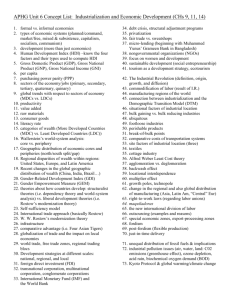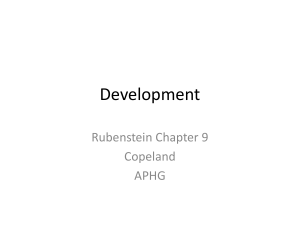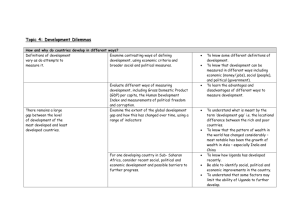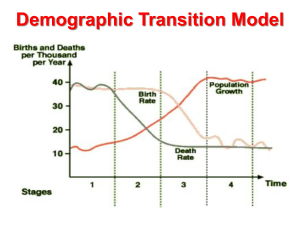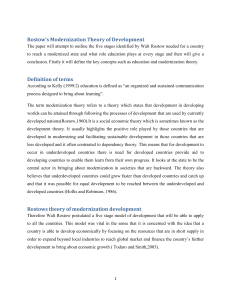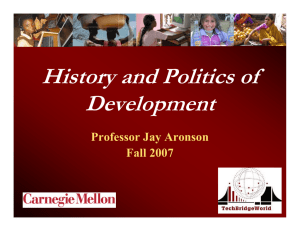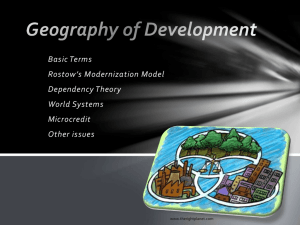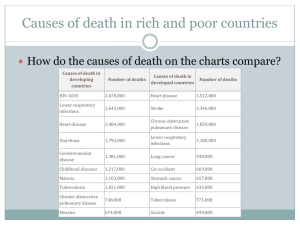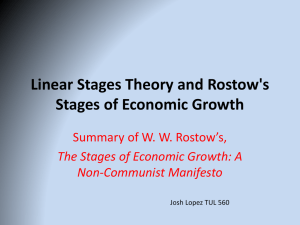The Demographic Transition Model
advertisement
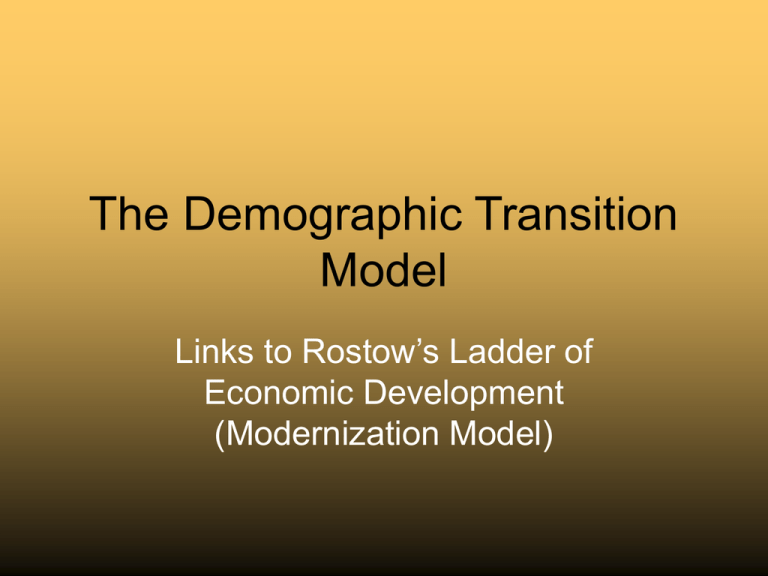
The Demographic Transition Model Links to Rostow’s Ladder of Economic Development (Modernization Model) DTM: Stage I • Low Growth stage in which the area experiences incredibly high birth and death rates resulting in little population growth. • Death was the result of plagues and epidemics. • Europe: Bubonic Plague (Black Death) Stage I Continued… • Stage I: Subsistence agricultural society which produces little food. • Famine contributes to the deaths • The society resists technological changes due to a rigid social structure Stage I and Rostow • Stage I correlates to the first stage of Rostow’s Modernization Model traditional. • In Stage I of the DTM the people are traditional,subsistence agricultural societies. • These societies resist modernization and technology. DTM: Stage II • • • • • • • • • • High-growth stage in which the area experiences high birth and declining death rates resulting in significant population increase Marked by the beginning of the Industrial Revolution AND the 2nd Agricultural Revolution Improved seed selection New methods of crop rotation and technology such as seed drill Selective breeding of livestock The number of people needed to farm DECREASED The food supply INCREASED Sanitation facilities and modern medical practices improved and diffused preventing the spread of disease Combination of improved food supply and medical practices result in reduction of death rate Birth rates fell slower, thus population explosion Stage II continued • Most of the world population is trapped in Stage II of the demographic transition. • Limited resources and cultural practices maintain unnecessarily high birth rates. • The segments of the world population that hold the fewest resources have the most rapidly growing populations. • India in the year 2000. Features of the second stage of the demographic transition. Stage II and Rostow • Rostow’s stage II (preconditions of takeoff) and stage III (takeoff) correlate to stage II of the DTM. • Governments and its people allow the country to diversify • Once this takes place, the country experiences something like an Industrial Revolution • Urbanization, industrialization, technological advancements and mass production increases. DTM: Stage III • Moderate-growth stage : declining birth and already low death rates resulting in continuing population increase at a slower rate • Lower birth rates occurred because of: 1. Greater urbanization, wealth, and medical advancements 2. Migration to urban centers; large families unneeded 3. New job opportunities for women delay marriage and pregnancies 4. Contraceptives and accessibility to abortions reduce births • In the figure notice there are also fewer births. This is stage three of the demographic transition model. Chile would be a good example. Stage III and Rostow • Stage III of the DTM corresponds with Rostow’s 4th stage, Drive to Maturity • Technologies diffuse • Industrialization and international trade expands • Modernization occurs • Population grows slowly Stage IV • Low-growth or stationary stage : low birth and death rates resulting in low rate of growth • Occurs in countries where women are most educated and involved in the labor force Stage IV and Rostow • Stage IV of the DTM corresponds to Rostow’s final stage of High Mass Consumption • Countries in this stage will have high incomes and widespread production of many goods and services • Majority of workers enter the service sector of the economy
